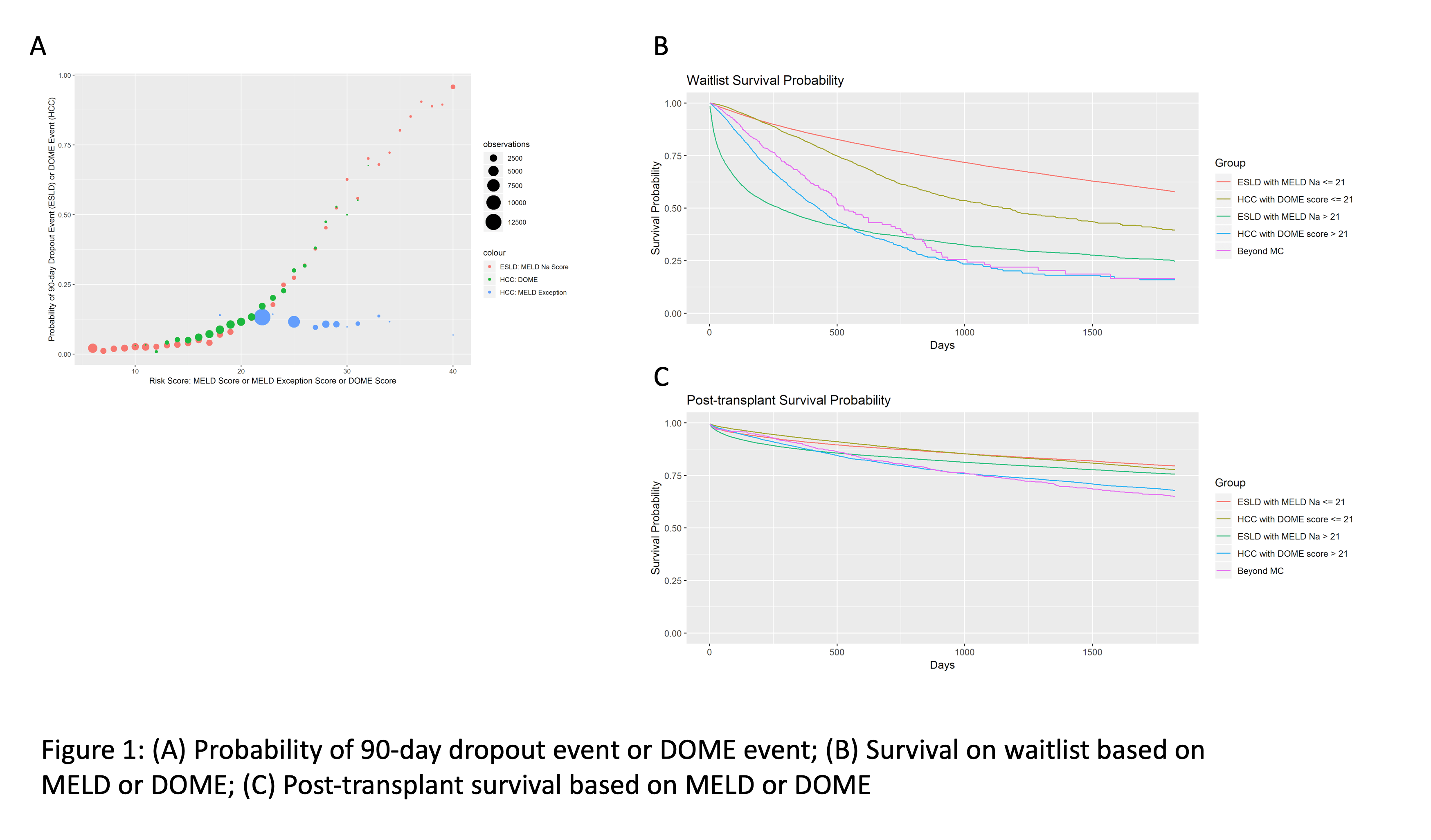DOME: A New Strategy for Prioritizing Hepatocellular Carcinoma Patients on the Liver Transplant Waitlist
1Massachusetts General Hospital, Boston, MA, 2Tepper School of Business, Carnegie Mellon University, Pittsburgh, PA, 3City University of Hong Kong, Hong Kong, China
Meeting: 2019 American Transplant Congress
Abstract number: 144
Keywords: Allocation, Hepatocellular carcinoma, Liver, Outcome
Session Information
Session Name: Concurrent Session: Liver: MELD, Allocation and Donor Issues (DCD/ECD) I
Session Type: Concurrent Session
Date: Sunday, June 2, 2019
Session Time: 4:30pm-6:00pm
 Presentation Time: 5:42pm-5:54pm
Presentation Time: 5:42pm-5:54pm
Location: Room 312
*Purpose: Currently, adult HCC patients are prioritized for liver transplantation by receiving MELD exception points, determined primarily by time on waitlist without regard to actual oncologic urgency, unlike lab MELD, which prognosticates risk of death in 3 months. We, therefore, developed a novel scoring algorithm to predict the likelihood of drop out within 3 months for HCC patients.
*Methods: We performed a retrospective analysis of all HCC MELD exception applications submitted to OPTN before 01/01/2014 and identified five independent factors predicting drop out or progression of tumor burden beyond Milan criteria, defined as DOME (Drop Out or Milan-Exceeding) events – time on waitlist, lab MELD, AFP, tumor size, and number of tumors. The DOME-score was developed to correspond to a similar risk of DOME event as death at the same lab MELD. Additionally, we evaluated the prognostic value of the DOME-score by assessing post-transplant survival for patients between 01/07/1986 and 12/02/2017 and correlating to pre-transplant DOME-score using a Cox proportional hazard model.
*Results: The probability that an HCC patient with a given DOME-score will experience a 90-day drop out event closely matches the MELD predictions for drop out of ESLD patient. (Figure 1A). DOME-score also predicts wait-list survival among HCC patients (figure 1B). Post-transplant survival is similar in the first three quartiles of DOME-scores (up to 21) and then slightly worse for the fourth quartile (figure 1C).
*Conclusions: The DOME-score provides an additional tool for prioritizing liver allocation among HCC patients by accurately identifying HCC patients most likely to drop off the waitlist. The DOME-score can be used in conjunction with the standard MELD system to co-prioritize HCC patients with ELSD patients or as a standalone tool to determine medical urgency among HCC patients. Additionally, high DOME-score is highly predictive of waitlist mortality.
To cite this abstract in AMA style:
Rickert C, Akan M, Leung Z, Markmann JF, Tayur S, Zhao H, Yeh H. DOME: A New Strategy for Prioritizing Hepatocellular Carcinoma Patients on the Liver Transplant Waitlist [abstract]. Am J Transplant. 2019; 19 (suppl 3). https://atcmeetingabstracts.com/abstract/dome-a-new-strategy-for-prioritizing-hepatocellular-carcinoma-patients-on-the-liver-transplant-waitlist/. Accessed December 9, 2025.« Back to 2019 American Transplant Congress

